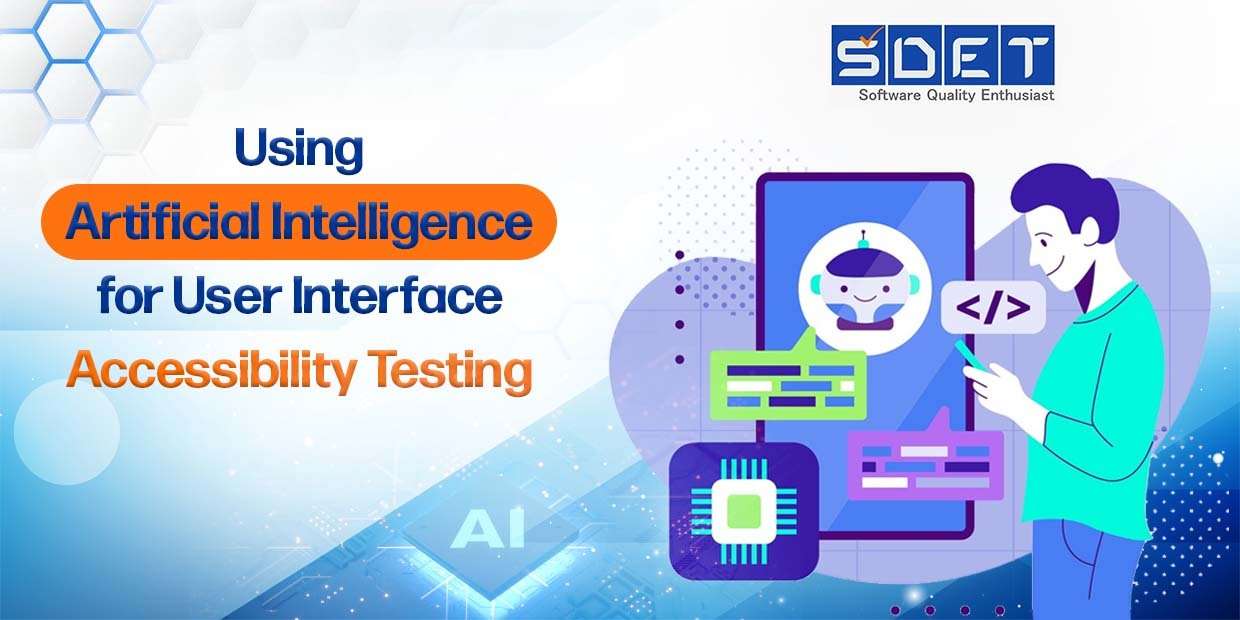
Using Artificial Intelligence for User Interface Accessibility Testing
Introduction:
Artificial intelligence (AI) is being utilized for digital accessibility to boost accessibility for all users and make the web more accessible and better for everyone, including people with disabilities, but could it do more? Over 2 billion individuals worldwide live with a disability, and 20% of them experience significant functioning challenges. The data highlight the fact that as more individuals access information online, accessibility difficulties have led to the creation of new laws and standards, including WCAG(Web Content Accessibility Guidelines), that are intended to address the issues faced by persons with disabilities. However, many businesses have been slow to implement an accessible plan due to the surge of accessibility lawsuits. It is therefore predicted that companies without accessible websites lose $6.9 billion annually to rivals who have accessible websites.
There are significant expectations about accessibility as a result of the growing demands of the internet world. These developments have important and far-reaching effects for the present and the future. AI based accessibility testing makes it easier to create innovative, complicated services that can improve the lives of everyone including the disabled and meet their needs. The proper communication between IT systems and assistive technologies is ensured by digital accessibility.
Significant Technologies
People with impairments use core functionality and assistive technology to access digital systems. Artificial intelligence has a great deal of potential for improving the quality of life for persons who have difficulties with their vision, hearing, cognition, speech, mobility, and learning. For people with impairments, AI-powered assistive devices have demonstrated obvious benefits, particularly in the areas of social interaction, performing daily tasks in the modern world, and employment. AI-infused inclusive design has the ability to enhance assistive goods with strong features. Users with vision impairment, for instance, can utilize screen magnifiers to enhance their display, making it simpler to manage input and output activities and guaranteeing ADA compliance.
Additionally, AI plays a pivotal role in strengthening data protection, privacy, and security in accessibility testing, making it more appealing..
Technologies Powered by AI
People with impairments are substantially impacted by AI technologies, which remove access barriers and enhance user capabilities. Such technologies must be developed and deployed with conscious adherence to ethical principles.
AI-based technology could be useful for:
- Overcoming difficulties with accessibility and regular interaction
- Ensuring that people with disabilities can live independently
- Reducing the amount of technology that prevents people with impairments when participating in digital activities
Artificial intelligence technologies deliver solutions that satisfy the needs of people with disabilities to increase accessibility by taking a user-centered approach. Additionally, AI technology expands their world’s accessibility and inclusivity.
Some of the ways AI is altering the realm of Digital Accessibility
AI-powered technologies now leverage digital inclusion solutions. AI can already be used by businesses to increase digital accessibility in a variety of ways. Start by identifying your enterprise’s fundamental needs and services using the most recent deep learning, machine learning, and cloud technologies. AI leaves its mark in the following areas:
- Image captions with alt text.
- Voice-over software.
- Improved automation.
- Using sufficient color contrast.
- Adding captions to video files.
- Enabling the ability to disable animation, which may harm persons with seizure disorders.
- Designing for easy navigation.
- Improving developers’, designers’, content authors’, and product owners’ abilities to adopt accessibility.
Accessibility testing using AI has become a standard element of the testing lifecycle, ensuring that your digital assets are accessible to everybody.
AI Implementation for Accessibility Testing
- Create an AI-powered accessibility testing model using effective AI algorithms and train the model over time for good prediction accuracy.
- The proposed model will put the accessibility to the test with greater intelligence.
- Create chat systems to assist users in understanding how accessibility affects their applications.
- Pay attention to accessibility compliance processes.
- Automate the flow of identified issues from multiple tools and manual processes in order to generate accessibility reports with a few mouse clicks.
- Examine accessibility conformity reports to determine their quality and accuracy.
Conclusion:
Businesses who provide AI-enabled digital accessibility experiences for all will benefit in a variety of ways. They can save money on development, increase client loyalty, and maximize their target audiences. That is why, in order to increase your long-term profitability and ROI, you should prioritize digital accessibility.
